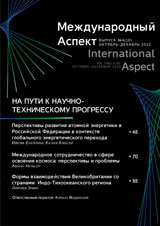
International Aspect was established on the basis of the School of International Relations (MGIMO University) in 2020.
The Journal is dedicated to international relations and foreign policy and specializes in publishing research on history, political science, economics and other social sciences in their international aspect within the following VAK specializations:
07.00.15 History of International Relations and Foreign Policy
23.00.04 Political problems of international relations, global and regional development
08.00.14 World Economy
International Aspect gives students and young scientists the opportunity to contribute to the study and scientific development of the disciplines included in the thematic profile of the publication. The priority of the journal is the compliance of published articles with the world scientific standards.
The Journal is member of MGIMO Students Scientific Society.







